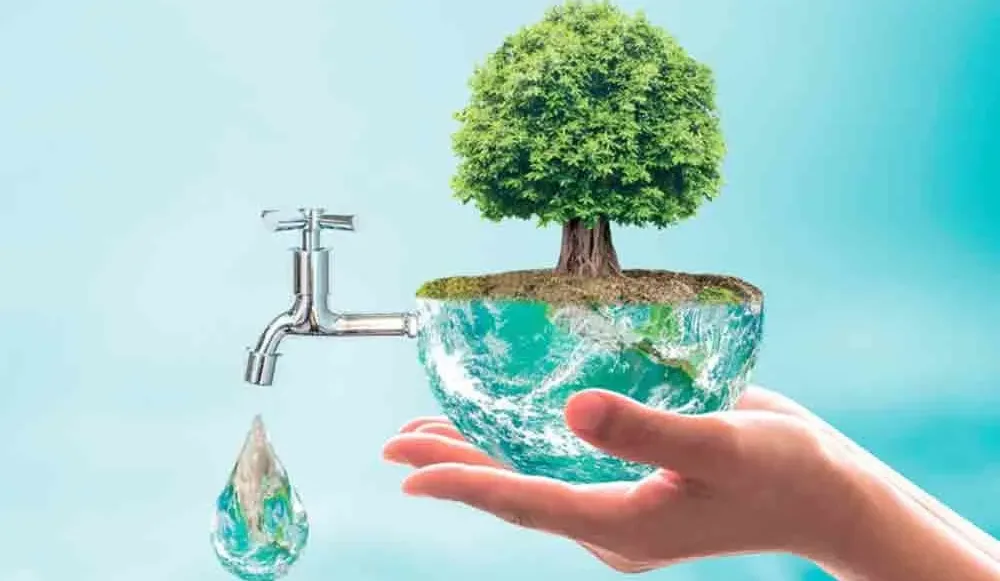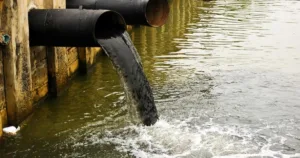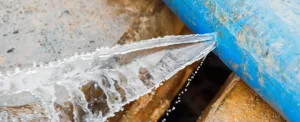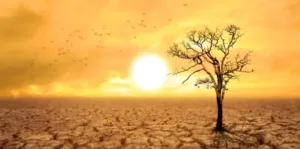The Global Water Crisis: A Growing Problem

Introduction
The global water crisis is a serious growing problem that is affecting people all over the world. Despite covering about 71% of the Earth’s surface, fresh, clean water is becoming a scarce commodity. Clean water is life-giving and is the foundation of our existence. It is caused by a number of factors, including population growth, climate change, water pollution, and inefficient use of water.
The water crisis has a number of far-reaching consequences, including health problems, food shortages, economic disruption, and conflict.
There are a number of things that we can do to address the water crisis, including water conservation, infrastructure upgrades, sustainable agriculture, and climate action.
By working together, we can find solutions to the water crisis and ensure that everyone has access to clean water.
Understanding the Water Crisis
Water Shortage
The global water crisis is often misunderstood. It’s not just about running out of water; it’s about this precious resource’s unequal distribution, access, and mismanagement. Some regions face physical scarcity, while others struggle due to economic barriers, preventing access to clean water.
Alarming Statistics
As the United Nations World Water Development Report was released in March 2023 approximately 2 billion people lack clean drinking water globally. While 3.6 billion people which is 46% of the world’s population, don’t have proper sanitation services.
Over 4 billion people have severe water scarcity for at least one month each year. By 2050, around 5.7 billion people might confront water scarcity annually.
Causes of the Water Crisis
Population Growth
The growing global population places significant demands on water resources. More people mean increased water needs for drinking, sanitation, agriculture, and industries.
Climate Change
Changing weather patterns, including prolonged droughts and unpredictable rainfall, intensify water stress in many areas. Melting glaciers threaten the water supply for millions living downstream.
Water Pollution
Industrial and agricultural runoff pollute water sources by carrying harmful chemicals, bacteria, and other pollutants into rivers and streams. Inadequate sewage treatment also pollutes water sources by releasing untreated sewage into the environment. This pollution makes water sources unsafe for drinking and other uses.

Inefficient Use
Water waste in agriculture, industry, and homes makes the water crisis worse. Leaky pipes and poor irrigation methods waste a lot of water.
Far-Reaching Consequences
Health Implications
Not having clean water to drink and use can make people sick, and it causes millions of deaths every year. When there is not enough water for people to wash their hands and keep their surroundings clean, it leads to bad living conditions.
Food Security
Water is essential for growing crops. When there is not enough water, crops can’t grow, and this can lead to food shortages and higher food prices.
Reduced yields: When crops do not receive enough water, they will produce fewer yields. This can lead to food shortages, as there will be less food available to meet demand.
Increased costs: Farmers may need to invest in more expensive irrigation systems in order to get the water their crops need. This can increase the cost of production, which can lead to higher food prices.
Damaged crops: Water scarcity can also damage crops, making them unfit for harvest. This can further reduce food availability and drive up prices.
Economic Impact
Industries that rely on water, like agriculture and manufacturing, may have to stop production or pay more for water. Water scarcity can also lead to conflict and migration, which can destabilize regions.
Disruptions: When industries do not have enough water, they may have to shut down production or reduce output. This can lead to job losses and economic hardship.
Cost hikes: Industries may have to pay more for water, which can increase their costs and make them less competitive.
Relocation: Industries may have to relocate to areas with more water, which can disrupt supply chains and lead to higher prices.
Potential Solutions to the Water Crisis
Water Conservation
Efforts to reduce water waste by using efficient irrigation methods, detecting leaks, and recycling water can help to solve the water crisis.
Efficient irrigation helps to reduce water waste by delivering water directly to the roots of plants, where it is most needed.
Leak detection can help to reduce water waste by identifying and repairing leaks in pipes.
Recycling can help to reduce water waste by reusing water that would otherwise be wasted.

Infrastructure Upgrades
Investing in water infrastructure, like better sewage treatment plants which help to reduce the amount of pollution in water, quality water pipes, and efficient distribution networks provides clean water to more people, especially in rural areas. New water sources include desalination and rainwater harvesting, which can provide new sources of water in areas that are water-scarce.
Sustainable Agriculture
Using methods like drip irrigation and crop rotation helps to save water and keep the soil healthy. Drip irrigation is a method of watering plants that delivers water directly to the roots of the plants, where it is most needed. This helps to reduce water waste by preventing evaporation and runoff.


Crop rotation is a method of planting different crops in the same field each year. This helps to prevent soil depletion and improve soil health.
Climate Action
It is important to take action on climate change. Reducing the amount of greenhouse gases we release into the atmosphere can help to make weather patterns more stable and reduce the risk of droughts.
Greenhouse gases: These are gases that trap heat in the atmosphere and cause Global Warming, the Earth’s temperature rises. This leads to changes in weather patterns, such as more extreme weather events.
Droughts: It is a period of time when there is not enough rain. Droughts are caused by climate change and deforestation.

We can reduce greenhouse gas emissions by
- Switching to renewable energy sources, such as solar and wind power.
- Improving energy efficiency in homes and businesses.
- Planting trees, which absorb carbon dioxide from the atmosphere.
- Reducing deforestation.
Organizations Working on Water Crises
There are many organizations that are working on this global water crisis which is a serious growing problem. These Organizations are working to conserve water, develop new water sources, and educate people about the water crisis. They are a nonprofit organization. They help people living in poverty get access to safe water and improved sanitation through affordable financing etc. Some organization’s names and links are as under:
UN-Water: UN-Water is a United Nations coordination mechanism that ensures the United Nations delivers as one on water and sanitation.
Water.org: Water.org is a global nonprofit dedicated to providing safe, affordable water and sanitation solutions, transforming lives by offering hope, health, and a brighter future to those in need.
Charity: Water: Charity Water is a non-profit organization that works to bring clean water to people in need
WaterAid: WaterAid is a nonprofit organization that has made a positive impact on millions through water, sanitation, and hygiene projects. It currently strives to provide clean water to an additional 400 million people in the coming decade with your support.
World Water Council: The World Water Council is an international organization that works to address critical water issues through engagement and debate.
Lifewater International: Lifewater is a Christian water charity that works to provide clean water to people in need, following the Great Commission.
Water For People: Water For People is a non-profit organization that works to provide clean water and sanitation services to people in need, forever.
Planet Water Foundation: Water Mission is a US-based NGO that provides clean water and sanitation to impoverished communities in Asia and Latin America.
Conclusion
The global water crisis is a complex and multifaceted growing problem. There is no single solution that will work for everyone, but there are a number of things that we can do to address the crisis. These include:
- Water conservation: We can all do our part to conserve water by taking shorter showers, fixing leaky faucets, and watering our lawns less often.
- Infrastructure upgrades: We need to invest in new water infrastructure, to make clean water available to more people.
- Sustainable agriculture: We need to adopt more sustainable agricultural practices, such as drip irrigation and crop rotation, reduce water waste, and improve soil health.
- Climate action: We need to take action on climate change to reduce the risk of droughts and other extreme weather events that can lead to water scarcity.
The global water crisis is a serious growing problem, but by working together, we can find solutions. Here are some additional things that we can do to help address the water crisis:
- Educate ourselves and others about the water crisis. The more people who understand the problem, the more likely we are to find solutions.
- Support organizations that are working to address the water crisis. There are many organizations that are working to conserve water, develop new water sources, and educate people about the water crisis.
- Get involved in local efforts to address the water crisis. There are many things that we can do at the local level to help conserve water and make clean water more accessible.
By taking these steps, we can all make a difference in addressing the global water crisis.


